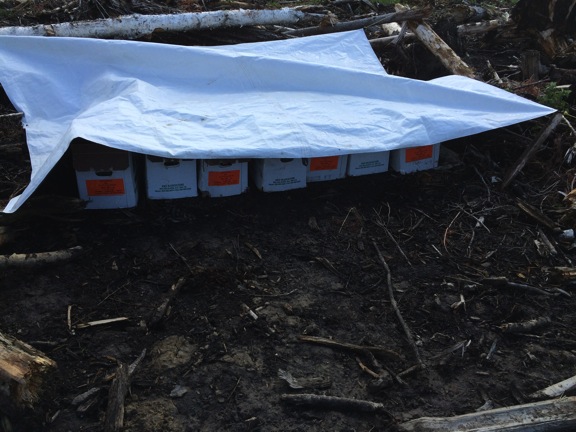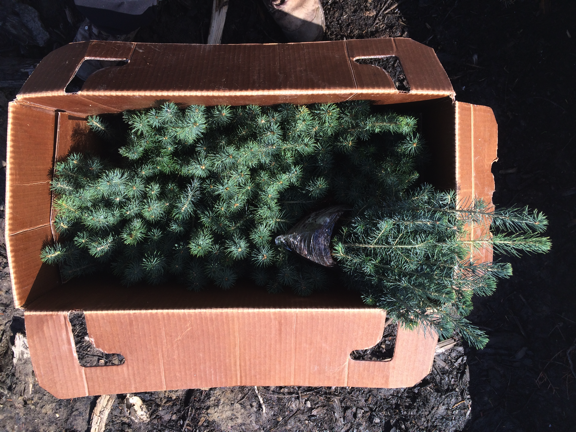Trees Trees Trees
July 29, 2015 10:42 am 1 Comment
I have been telling you in my last couple blogs about the planters and planting but I haven’t told you how the trees are planted or even what they look like. Here are a few tips I have learned over the summer from checking trees.
My job entails going out to the cut-blocks that the tree planters have planted or are planting to ensure that there are no holes (a place that didn’t get planted because it got missed), to make sure density is good (the threshold of trees allowed to be in each plot is 7, 8, or 9), to make sure the trees are planted adequately (not to deep or shallow, not to slanted, or underneath any debris, etc.) and of course to see how the planters are doing (if they have any questions or problems).
These are what the seedlings (trees) look like before they are put in the ground. The seedlings are one year olds and are grown in a nursery before planted. The seedlings in the picture are from the Lakeside Nursery (they are white spruce or Picea glauca). The trees are bundled together in groups of fifteens and put in boxes of two hundred and seventy trees per box. Notice the brown part of the tree, that is called the plug; it is the part you put in to the ground and it is made up of roots and soil.
If the plug is sticking in to the ground to deep that it covers the laterals (branches) the tree will have a harder time growing due to the less foliage (leaves or needles) exposed. If the plug is to shallow and sticking out from the ground it can dry out the roots of the tree to die. If the plug is bent while putting it in to the ground causing a “J” shape it can also cause the tree to die. There are many other factors that play a component in the trees health such as picking the best microsite (a low wet spot can drown the tree). The best microsite for planting the trees is the humps, bumps and stumps. The higher the ground the better! Another factor is planting the trees to close to each other; the minimum they can be away from each other is 1.3m. The trees must not be planted under any debris such as sticks or branches, this is because as the tree grows it will grow around the blockage and be classified as a defect tree in the next rotation (when they harvest again). If the planter creates an air pocket when planting it can also kill the tree, as it will dry up the roots.
In order for the trees to stay cool in the hot sun in cut-blocks, the foremen of the tree planters will build caches to shade the trees. This cache is more preferred for springtime because it is so low to the trees, while in summer the tarp will be higher which allows the trees to breath.

If any of the tree specifications are not met, we (as in the checkers) give them faults on the plot cards.
I hope you learned something new today, and I hope you all are enjoying your summer
Taylor



1 Comment
Taylor, it is clear you have learned a lot about trees, tree planting and silviculture in general over the summer. Your blogs have been well written, informative and I really enjoyed reading them. I hope you have a great year at school and hope you will include West Fraser in your future plans!
Best of Luck!